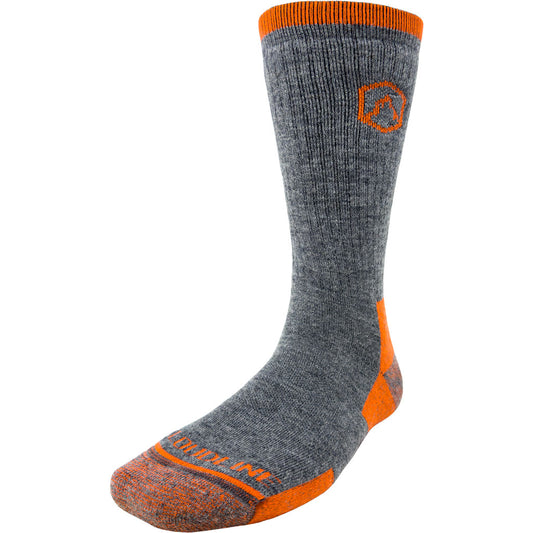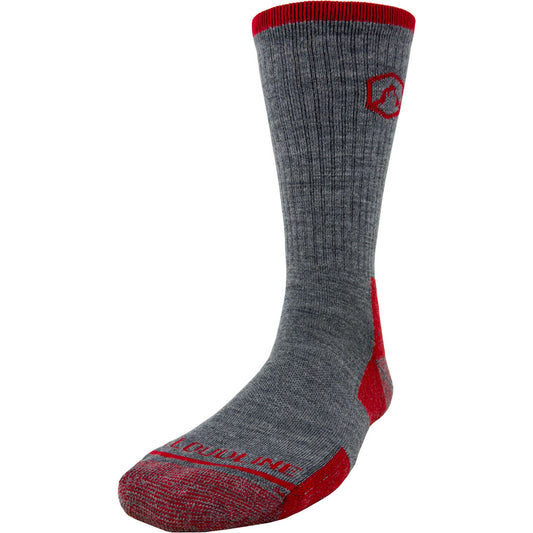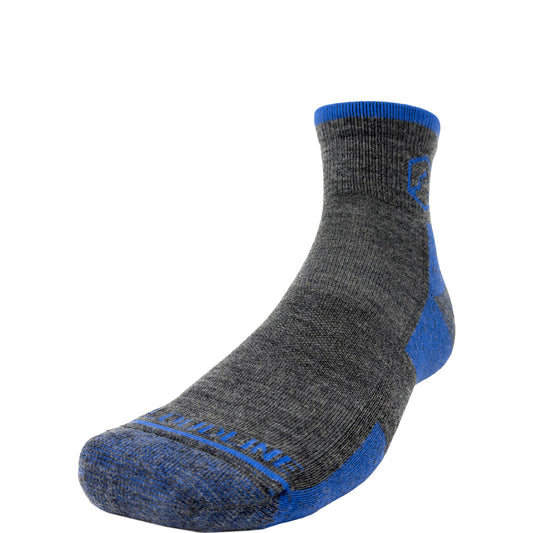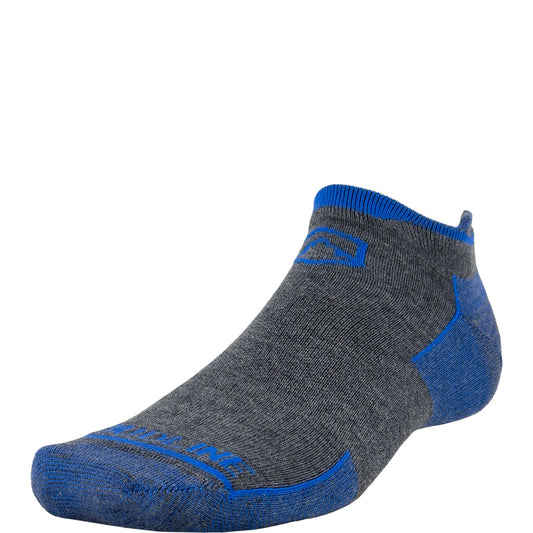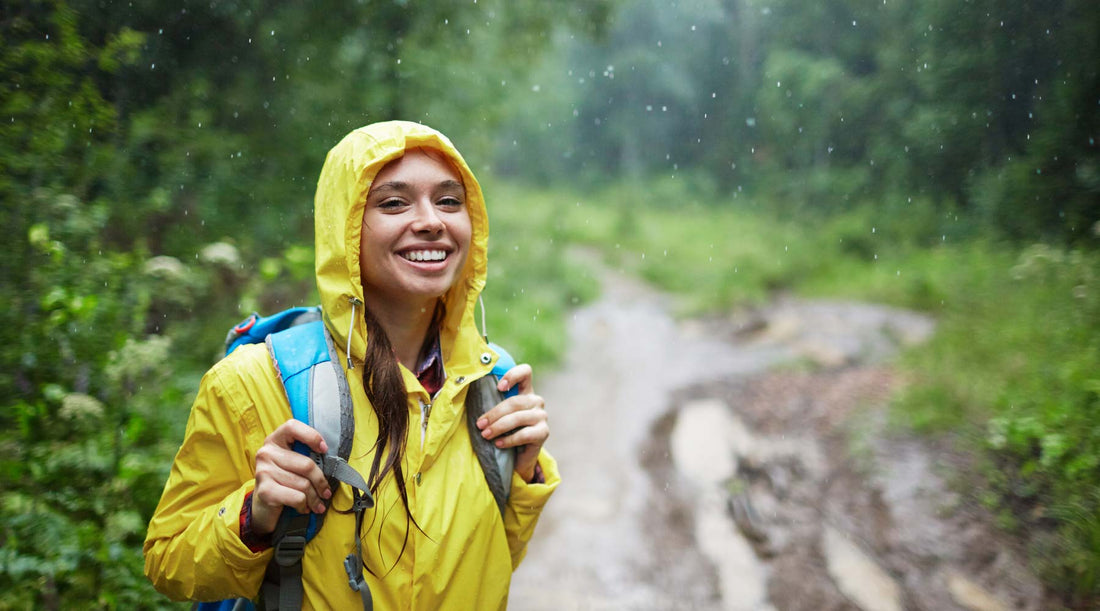
12 Tips to Make Rainy Outdoor Adventures More Fun
With spring around the corner, it’s time to think about hitting the trails. But if you live somewhere with wet spring weather — like we do in Seattle — conditions are, well… soggy.
It takes more preparation to be comfortable on a wet spring hike, but trust us, it’s worth it.
Empty trails, spring wildflowers, and cool weather are just a few reasons why we love spring hiking. Game to give it a go? You’ve come to the right place.
We’ve spent tons of time on the trails in the Pacific Northwest, testing our merino wool socks in all kinds of weather. Over the years we’ve discovered these 12 tips that make adventuring in wet spring weather a whole lot more fun.
1. Choose the Right Trail

Choosing a trail for hiking in the rain is the first step to a successful rainy adventure. We suggest you pick a trail with lots of tree cover — like one that winds through a forest. Hiking under a canopy of trees will shield you from a lot of the rain.
Don’t choose a hike that pushes your physical boundaries to the limit. You don’t want to be struggling to complete your hike, especiallyif you end up getting soaked.
Finally, pick a trail that doesn’t depend on clear skies for the view. For example, you could pick a hike that ends at a waterfall or lake or has beautiful wildflowers along the way. If you choose a steep climb that’s supposed to have a killer view at the top — but the clouds obscure your view — you’ll be disappointed.
Pro tip: Check sites like AllTrails or Hiking Project for recent hiker reports that mention trail conditions.
2. Check the Weather

If you can, plan your hike around the worst of the rain. We’re fans of the Dark Sky app because it provides a detailed hourly breakdown of forecasted weather and even has an animated doppler radar that lets you see incoming storms. If you live in a mountainous area of the U.S., Mountain Weather is another great tool to check out
If you’re camping, try to avoid setting up camp during the worst of the rain. No one likes sleeping in a wet tent, and once wet, it’s hard to get dry.
3. Layer With Merino Wool and Synthetic Clothing

Wet weather calls for extra care when it comes to your clothing. You’ve heard it before, but layering is the best method for controlling your temperature when you’re outdoors. If you can, wait for breaks in the rain to switch layers or change quickly to keep yourself dry.
Choose layers made from merino wool — merino fabric maintains its insulative properties even when wet, so you know you can trust it in the rain. Avoid cotton and down. Neither are useful when wet, and you don’t want to risk hypothermia.
Don’t forget about your feet! Merino wool hiking sock wick moisture away from your feet, preventing blisters even when it’s raining. It’s also a great idea to pack an extra pair in case you do get soaked.
Pro tip: Keep extra layers in a roll-top dry sack to be sure you have something warm and dry to put on at camp.
4. Invest in High-Quality Rain Gear

If you plan on hiking in the rain, you'll be thankful to have the proper rain gear. This includes pants, footwear, and a jacket that are waterproof and breathable. Choose a jacket and pants made from Goretex, eVent, or similar materials that are designed to keep rain out while allowing moisture from sweat to escape. Vents or pit zips are also a plus, allowing you to cool off while staying dry.
And while we love to hike in breathable trail runners during the summer, it’s best to opt for waterproof boots when it’s pouring.
5. Bring a Pack Cover

Use a pack cover to keep your backpack dry. Otherwise, your pack can begin to soak up the rain and become heavier as you hike. Plus, who wants to bring a soggy backpack into their tent at night? A pack cover slips over the outside of your backpack and works like a raincoat — easy and effective.
Pro tip: Don't have a pack cover? Grab a plastic garbage sack big enough to slip your pack into. Cut small holes where your pack straps need to feed through and you've got a DIY pack cover.
6. Consider a Hiking Umbrella

We know bringing an umbrella hiking or backpacking sounds odd, but don't knock it till you try it. Hiking in the rain while wearing pants and a jacket can turn you into a sweaty mess in a hurry, especially in warm months. Sound unpleasant?
You can ditch the pants and jacket for a hiking umbrella instead. Made with ultralight materials, a hiking umbrella adds little weight to your pack. You won’t even notice it’s there until you need it! You’ll need to choose your trail strategically though — you don’t want to do any scrambling with an umbrella in your hand.
Recommended Gear: Sea to Summit's Ultra-Sil Trekking Umbrell
7. Avoid Wet Brush

Even after the rain passes, wet brush on narrow trails can quickly soak your clothing.Wear your rain pants while navigating brushy trails to avoid wet pants, socks, and shoes.
If you’re hiking in warm weather, you can opt for a pair of gaiters instead. Gaiters come in different heights and materials for different trail conditions, but you can get a waterproof pair that keeps water from getting into your boots.
8. Bring a Tarp

A tarp is one of our favorite items to bring on the trail. It’s a versatile piece of gear that’s invaluable in the rain. And it’s like a Swiss army knife — you can use it for a million things.
You can hang it with a line between two trees, extend a shelter from your car while frontcountry camping, or use it as a dry surface to sit on after the rain stops. Don’t forget to bring some paracord so you can make the most of your tarp.
9. Pack Plenty of Weatherproof Firestarter

Fire is part of the Ten Essential, so you should always have the tools to start one in your pack.
But getting a fire started in the rain is no easy task. That’s why we suggest packing a weatherproof firestarter.
You can buy waterproof matches and make your own firestarter: Soak regular old cotton balls in petroleum jelly and store them in a sealed tin.
10. Pitch Your Tent on High Ground

If you’re staying out overnight in the rain, pay attention to where you pitch your tent and avoid any ditches, bowls, or low areas.
On a recent trip, it started pouring just as we went to bed. In the middle of the night, we woke up to our friend cursing loudly because water had leaked into his tent. He had to move in the middle of the storm — and in the morning, we found a large puddle where his tent had been.
11. Sleep in a Synthetic Sleeping Bag

While down is the preferred material for winter trips, synthetic is the way to go for rainy backpacking trips. A quality synthetic sleeping bag retains most of its warmth when wet, so you won't have to worry as much if your bag gets wet brushing against tent walls.
Another reason we love synthetic sleeping bags for spring camping? You can crawl in your bag wearing slightly damp clothes without a problem, and you'll soon be warm and dry. Don’t try this in a down bag, though — remember, wet down is not an effective insulator.
12. Warm Up With a Hot Water Bottle

You can cool down really fast if you get wet from the rain — and being wet and cold when you’re camping is no fun at all. To warm up, heat a pot of water and pour it into your Nalgene water bottle. Get in your sleeping bag with the bottle, and you'll be warm and toasty in no time.
Pro-tip: Slip an extra hiking sock over the bottle — before pouring in the hot water — to moderate the temperature.
Don’t Let Spring Weather Rain on Your Parade
Spring is the start of hiking season, and it’s no time to stay indoors. With some preparation, extra gear, and a sense of adventure, there’s no reason to wait for summer to get outside.
What’s your best tip for hiking or camping in rainy weather? Let us know in the comments below.

